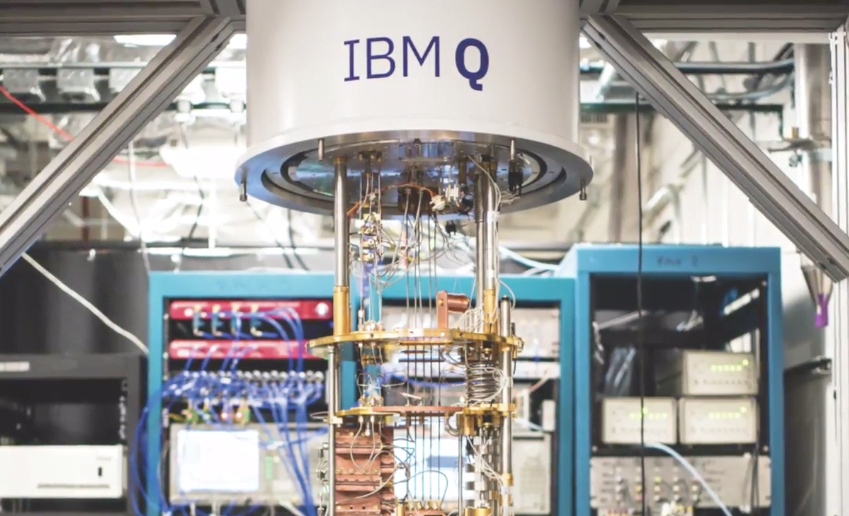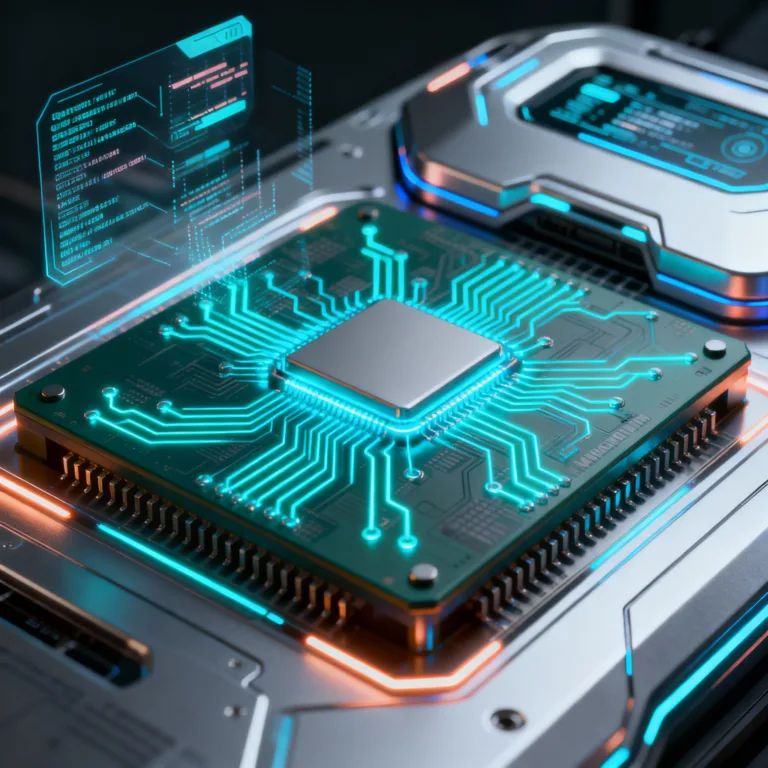1. Introduction to Quantum Computing
The invention of the world’s first digital computer in 1946 marked the beginning of a new era of computing. These early machines had very specific uses and could not handle complex or diverse problems.
The development of the first programming language, FORTRAN, changed that by allowing programmers to express real-world problems in a language that could be easily converted into machine code.
Quantum computers will be exponentially faster and more powerful than classical computers, just as the first digital computers surpassed their predecessors.
Classical computers have met computational needs for decades by following Moore’s Law, which states that the number of transistors in an integrated circuit doubles every two years. However, some applications demand more computational power than ever, especially for parallel processing.
Quantum computing is still in its infancy, but the industry is making rapid progress.
With developments such as Google’s 72-qubit quantum computer Bristlecone, IBM’s 1000 Qubit quantum computer, and many specialized companies like D-Wave, some believe we are on the verge of achieving quantum supremacy.
Unlike classical computers that are based on sequential information processing, quantum computing makes use of three fundamental properties of quantum physics:
- Superposition
- Inference
- Entanglement
These properties are extremely useful for certain tasks, particularly inter-correlated events that are to be executed in parallel.
As you can imagine this will lead to many of new business opportunities, otherwise not possible using classical computers, including quantum machine learning, cybersecurity, chemical and materials designs, as well as medical and pharmaceutical research.
2. Overview of Classical Computing
To understand how quantum computers work, we need to first review the basics of classical computing. All the devices we use, such as smartphones, tablets, and desktop computers, consist of simple components that perform simple tasks.
They execute basic arithmetic operations at a very high speed, which enables us to create and run sophisticated applications with them.
However, classical computers are not suitable for some problems that are too hard to solve.
Machine learning is a field that has made remarkable progress in recent years, especially in areas like natural language processing, image recognition, and reinforcement learning. But these achievements often require supercomputers that take up a lot of space and power.
This leads us to ask: can we design computer systems in a fundamentally different way?
Here is a brief summary of conventional computing:
– Computer chips are composed of modules
– Modules are composed of logic gates
– Logic gates are composed of transistors
– A transistor is like a switch that can either block or allow information to pass through. This information is made up of bits, which can be either 0 or 1.
A transistor is essentially an electric switch. It can control the flow of electrons, which are the basic units of electricity. A transistor is very tiny, about 14 nanometers in size. For comparison, a red blood cell is 500 times larger than a transistor.
3. What is Quantum Mechanics?
The first thing you need to know is that at the subatomic level, things are…different.
Quantum mechanics is the branch of physics that deals with the behavior and interactions of photons, electrons, and other subatomic particles that constitute the universe. Quantum mechanics reveals the laws that govern the motion and interaction of these particles at the atomic and subatomic scales.
At the quantum level:
- Matter is quantized
- Energy is quantized
- Momentum is quantized
In our universe, we usually assume that there is only one reality.
For example, if we flip a coin, we expect it to land on either heads or tails, right?
But in the quantum realm, where the laws of physics are different, reality is not so simple. There can be multiple realities.
Imagine we flip a coin at the subatomic level, and we don’t look at it (we’ll explain why this matters soon). If I asked you whether it was heads or tails, what would you say?
The surprising answer is that it’s both.
The coin exists in a superposition of both states simultaneously.
And we can show this with mathematics.
We said that for this superposition to exist, we have to avoid looking at the result of the coin flip. This is because the act of observation affects the outcome. It doesn’t matter if the observer is a conscious human or a measuring device.
So what happens when we do look at the coin?
As soon as we observe it, the coin chooses one state and loses the other. Or in other words, it collapses the wave function.
Superposition
Superposition is essentially the ability of a quantum system to be in multiple states at the same time — that is, something can be “here” and “there,” or “up” and “down” at the same time.
Entanglement
Entanglement is a phenomenon in which quantum particles are so strongly connected that they behave as one, even when they are far apart. The particles share the same quantum state and any change in one of them affects the other instantly, regardless of the distance between them.
This means if one of the particles is observed, the other one will also be instantly affected by the observer.
It doesn’t matter how far apart they are from each other in the universe, the other particle could be in another galaxy, but as soon as one is changed the other instantly changes state.
Click Here To learn more about Entanglement
In quantum computing, a qubit can both 1 and 0.
Unlike classical bits, which can only store information as 0 or 1, a quantum computer uses qubits that can encode quantum information in both states simultaneously due to superposition.
This gives quantum computers a unique advantage – they can perform multiple tasks at the same time by using quantum gates that manipulate the states of qubits.
Quantum gates allow qubits to exist in a combination of states, enabling parallel and simultaneous execution of all possible outcomes – unlike the sequential and binary operations of classical computers.
4. What is a Qubit?
A qubit is a quantum system that has two possible states, such as a spin in a magnetic field or a single photon. These states can be represented by 0 and 1, like the horizontal or vertical polarization of the photon.
However, unlike a classical bit that can only be 0 or 1, a qubit can exist in a combination of both states at the same time. This phenomenon is called superposition.
When you measure a qubit, for example by sending the photon through a filter, it loses its superposition and becomes either 0 or 1 with a certain probability. You cannot predict the outcome before the measurement.
This means that a qubit can store more information than a classical bit, and this has profound implications for computing. Here is an example to illustrate why…
A classical bit can have one of two values: 0 or 1. Four classical bits can represent one of 16 different configurations at a time. For example, 0000, 0001, 0010, …, 1111. Only one of these configurations can be used at a time.
A qubit can also have two values: 0 or 1. However, a qubit can also be in a superposition of both values, meaning that it has some probability of being 0 and some probability of being 1.Four qubits in superposition can represent all of the 16 possible configurations at once, with different probabilities. This number grows exponentially with each additional qubit. For example, 20 qubits in superposition can represent over a million possible configurations at once.
Another important concept is qubit manipulation. A classical logic gate takes a set of inputs and produces one definite output. For example, an AND gate takes two bits and outputs one bit that is 1 only if both inputs are 1. A quantum gate takes a set of qubits in superposition and manipulates them by rotating their probabilities and creating entanglement between them.
Entanglement is a phenomenon where two or more qubits are linked in such a way that their states depend on each other. A quantum gate outputs another set of qubits in superposition.
So a quantum computer sets up some qubits, applies quantum gates to entangle them and manipulate probabilities, and then measures the outcome by collapsing the superpositions to 0s and 1s.
This means that you get the entire collection of calculations that are possible with your setup, all done at the same time. You can only measure one of the results, but by exploiting the properties of superposition and entanglement this can be exponentially more efficient than a classical computer.
5. Applications of Quantum Computing
Quantum computers have the potential to perform some tasks that are beyond the reach of classical computers, thanks to their ability to exploit quantum phenomena. Some of the most promising applications are:
– Quantum simulation: Quantum computers can simulate complex physical systems that are too difficult or impossible to model with classical methods. This could lead to new discoveries in fields such as chemistry, biology, and materials science.
– Quantum optimization: Quantum computers can solve certain optimization problems that are intractable for classical algorithms. This could have applications in areas such as logistics, scheduling, machine learning, and artificial intelligence.
– Quantum cryptography: Quantum computers can enable secure communication protocols that are immune to eavesdropping or tampering by adversaries. This could enhance the security and privacy of data transmission and storage.
– Quantum machine learning: Quantum computers can leverage quantum effects to enhance the performance and efficiency of machine learning algorithms. This could enable faster and more accurate data analysis, pattern recognition, and decision making.

Let’s discuss a few applications of quantum computing in more detail.
Quantum Machine Learning
Quantum computing is a field where artificial intelligence companies are leading the way in development and deployment. One of the early applications of quantum computing is to accelerate existing machine learning algorithms, and it will soon be possible to create new kinds of algorithms that are not currently feasible.
There are four main ways that quantum computers can be applied to machine learning:
– Optimization
– Sampling
– Kernel Evaluation
– Linear Algebra
D-Wave is an interesting company in this space that can use quantum computing for deep learning with much less data. You can click here to know more Quadrant.ai,
They build deep learning models that can assign labels and generate data, which allows them to train accurate and discriminative models with significantly less labeled data.
New Material Synthesis
The goal of this project is to understand the structure and behavior of materials from the perspective of quantum mechanics. This involves studying the arrangement and defects of atoms, the interactions and bonds between them, and other factors that affect their properties.
One of the main tools for this task is the Variational Quantum Eigensolver (VQE), which is a quantum algorithm that can estimate the lowest energy state of a molecule or a material. By using VQE, we can simulate and predict various chemical phenomena and design novel materials with desired features.
Financial Forecasting
In Finance, quantum computing can help with portfolio optimization, scenario analysis, and pricing. Some of the popular models for these tasks are the Black-Scholes-Merton model and Monte Carlo evaluation.
Government
Quantum computing has received support from government agencies, which have been using it to run scenario simulations and analyses. For example, they have applied it to policy design and climate change simulation.
Cybersecurity
Quantum key distribution relies on the principle of entanglement, but it does not involve any quantum computing hardware.
Supply Chain
Traffic simulation, vehicle routing, and optimization are tasks that quantum computers can handle efficiently. These tasks can help achieve faster delivery, higher sales, lower costs, and better customer satisfaction.
6. Summary: What is Quantum Computing?
In this article, we have explored the main principles and uses of quantum computing. To conclude, let us compare and contrast the classical and quantum paradigms of computation.
Here is a comparison of two different computing approaches:
Classical Computing
- It uses bits as the basic unit of information, which can be either 0 or 1.
- processes information in a sequential manner, following a series of instructions.
- It can be distributed across different devices, from the cloud to the edge, depending on the needs and resources.
- Suitable for tasks that involve text, video, image, internet, and other types of data that can be represented by bits.
Quantum computing
- It uses qubits as the basic unit of information, which can be both 0 and 1 at the same time.
- Exploits the phenomena of superposition and entanglement to perform operations on multiple qubits simultaneously.
- It is unlikely to be distributed across different devices, as it requires specific conditions to maintain the quantum states of the qubits, such as low temperatures and high magnetic fields.
- It is not optimized for tasks that involve classical data, but rather for advanced use cases that require massive amounts of parallelism, such as optimization, simulation, cryptography, and machine learning.
Discover more from WireUnwired Research
Subscribe to get the latest posts sent to your email.




